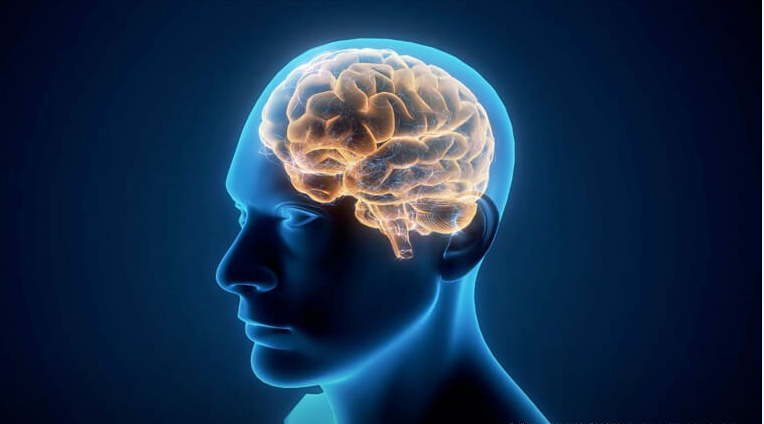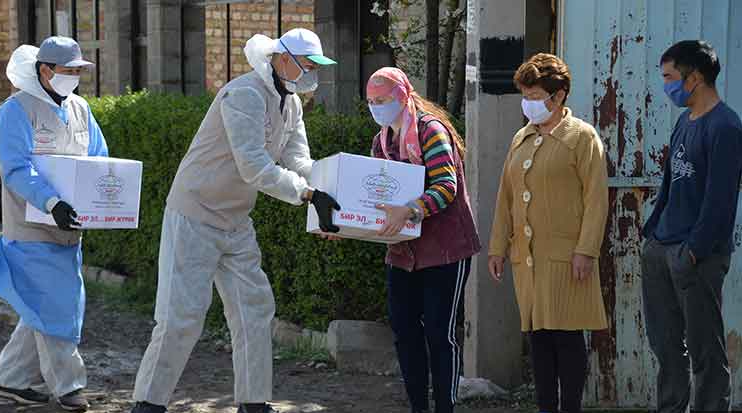Mental Health For Young People
Learn about mental health for young people and how to use it to achieve their goals and success.

Selfpause Affirmation App
Download the app to get 1,000’s of affirmation meditations and everything you need to write, record and listen to your own.
Adolescence is an age when many people start to face mental health issues. Statistics show that one in five adolescents will deal with some sort of mental illness during this time, and it’s important to be aware of the signs and treatment available. This five-week course explores some of the most common psychological problems and offers practical tips for recognizing and managing them. It features short assignments, quizzes, and personal stories to provide insight into a range of issues.
Identifying and managing common mental health conditions

Many mental health conditions affect young people, and some go undiagnosed. This can lead to problems at school, in the family, and in forming healthy relationships. Untreated conditions can also affect a child’s overall development and may result in self-harm and suicidal thoughts. This is why it’s important to recognize these issues early.
One of the most common mental health conditions among youth is anxiety. It’s estimated that one in eight adolescents meets the clinical criteria for an anxiety disorder. Anxiety disorders, such as generalized anxiety disorder, social anxiety disorder, or panic disorder, affect a person’s ability to function normally in various areas. They are also associated with an increased risk of suicide and attention-deficit/hyperactivity disorder.
Mental health disorders in adolescence are a major problem. Although they’re fairly common and treatable, only one third of adolescent patients get proper treatment. Moreover, half of all serious psychiatric disorders in adulthood start in childhood. Unfortunately, treatment often starts six to 23 years after the onset. Moreover, female adolescents are twice as likely as their male counterparts to experience anxiety or mood disorders. In addition, obstetricians are more likely to see young women with mental health disorders.
Suicide is one of the most dangerous mental health problems for young people. It is one of the leading causes of death in young people. Suicide attempts are 100 to 200 times higher than the rate of completion, so it is crucial to identify and respond appropriately. If you suspect a young person is suicidal, consult a mental health professional immediately.
Mood disorders are the most common mental health problems in adolescents, with one in every eight children experiencing at least one type by late adolescence. A mood disorder may result in a wide range of symptoms including depression, irritability, and anxiety. Some of these symptoms are common in female adolescents while some may be more extreme in males.
Getting appropriate and timely help

When a young person is suffering from mental health problems, they need extra help from a professional. They may be making bad choices or are in need of counselling or support from family members. If this is the case, they may benefit from seeking help from their GP, school, or local mental health service. They can also access online services, such as Beyondblue and Headspace, for more information and advice.
Research suggests that nearly half of young people will experience some form of mental health problem during their adolescence. Some of the common problems include behavior disorder, substance abuse, and anxiety. About one-fifth of adolescents will experience severe mental health problems. The prevalence of mental illness is highest among young people aged 18 to 25, and one in five will attempt suicide at some point in their lives.
The best treatment plans for young people can help alleviate suffering and help them achieve better educational outcomes. They can develop positive relationships and access to employment, as well as lead more fulfilling lives. Getting appropriate and timely help for mental health for young people can be difficult, but it is important to provide support and guidance.
Mental health problems among young people can be caused by traumatic experiences or by changes in their lives. For example, children can experience separation anxiety, and teens are more likely to suffer from depression than young children. Young people can also struggle with attention deficit hyperactivity disorder (ADHD), which makes them overactive. Many young people also suffer from eating disorders, which have devastating effects on their mental and physical health.
The evidence for brief psychotherapy interventions for young people is limited, but there are promising results. Brief interventions can be used for acute symptom relief, and they often have high acceptability and engagement.
Accessing digital mental health tools

Accessing digital mental health tools for young people presents a number of challenges. In addition to being difficult to implement, these tools often need human support in order to be effective. This is especially important because vulnerable groups are especially susceptible to manipulation via digital platforms. To make them more effective, developers should engage diverse stakeholder groups to co-design the tools and ensure that they represent the needs of the end users.
Researchers have found that digital interventions have a wide impact among young adults suffering from serious mental illness. Using digital tools can help provide better mental and physical health care for this at-risk population. The study also found that the use of such tools is increasing among young adults. Specifically, smartphone apps are proving to be highly popular with participants.
However, there are some challenges that should be addressed before digital mental health tools can be widely used. One of the biggest is the accessibility of the tools. Some of these tools are developed for a specific diagnosis, such as anxiety or depression, and they may not be suitable for young adults with other disorders.
Digital mental health technologies offer tremendous promise to bridge the gaps in mental health care for at-risk young adults. With the help of these tools, lifestyle interventions and mental health promotion can be customized to the needs of these individuals. These tools can help reduce the burden of mental illness and help them live happier, healthier lives.
Importance of physical activity

In a recent study, researchers found that young people who exercised were less likely to suffer from depression. The researchers looked at the amount of physical activity of young people aged 12 to 16 as well as depression levels at age 18. The study participants were given accelerometers to measure their activity.
The researchers found that exercise was associated with fewer cases of depression and anxiety. Exercise was also linked to better sleep quality, which is closely related to mental health. Furthermore, physical activity was found to improve a child’s self-esteem. And because exercise reduces stress, it may help young people fight off chronic diseases such as diabetes and obesity.
The study involved 928 12-13 year olds from six secondary schools in England. The young people’s physical activity was measured using accelerometers. They were also asked about their mental health status using the Warwick Edinburgh Mental Wellbeing Scale and a Strengths and Difficulties Questionnaire. The researchers then performed multivariable linear regression analyses to examine the relation between physical activity and mental wellbeing.
While many studies have shown that physical activity improves mental health, few have proven that exercise can help prevent mental health disorders. Although physical activity is not a substitute for mental health treatment, it can improve a person’s quality of life and help them cope with daily challenges.
Young people should exercise for at least half an hour per day. This can be broken into two 15-minute sessions or three 10-minute sessions. This can help people with busy schedules. The more they exercise, the more energy they have.
Impact of COVID-19 crisis on young people’s mental health

With the COVID-19 pandemic gaining the attention of governments, scientists and the general population, the impact on young people’s mental health is of particular concern. However, there have been few systematic reviews or empirical studies that engage young people’s perspectives on COVID-19 and mental health. In this paper, we critically evaluate and synthesise the existing evidence to identify potential impacts on the mental health of young people.
The COVID-19 pandemic has affected the mental health of young people in a number of ways, with young people in affected countries fearing that they might become infected with the virus. In addition, they may be worried about losing friends and family members and being isolated from friends and social networks. In addition, the prolonged closure of schools and universities has resulted in an increase in family stress, which can contribute to mental health problems.
The crisis has also resulted in increased substance use and the risk of suicidal ideation among young adults. In a study of young people, one-fifth reported that they used illicit drugs, and a further one-third said they were misusing prescription opioids. The study also noted an increase in solitary substance use, which is associated with poorer mental health and increased risk of suicide.
A recent meta-analysis of published and unpublished studies has identified increased depression and anxiety among young people. However, there are several limitations to the study. The authors acknowledge that the study is only one study, and there are many other studies that are needed to confirm its findings.
Our Top FAQ's
Some common mental health issues that young people may face include anxiety, depression, eating disorders, and substance abuse. Other mental health challenges that may affect young people include trauma, relationship problems, and difficulty adjusting to life changes.
There are many ways that young people can cope with mental health challenges. Some strategies that may be helpful include seeking support from friends and family, practicing self-care, and engaging in activities that bring joy and relaxation, such as exercise or hobbies. Seeking professional help, such as through therapy or medication, can also be an important part of managing mental health challenges.
Parents and caregivers can support the mental health of young people by being a supportive and caring presence in their lives, listening to their concerns and providing a safe and nurturing environment. They can also encourage healthy habits, such as getting enough sleep, eating well, and engaging in physical activity, which can help to promote overall mental wellness.
There are many resources available for young people seeking help for mental health issues. These may include mental health professionals, such as therapists or psychiatrists, school counselors, and support groups. Many schools and communities also offer mental health services and resources, such as crisis hotlines and online resources.
Schools and communities can promote mental health among young people by providing education about mental health and wellbeing, supporting access to mental health resources and services, and creating a positive and supportive environment. Schools and communities can also promote mental health by addressing issues such as bullying and promoting positive relationships and social connections.
